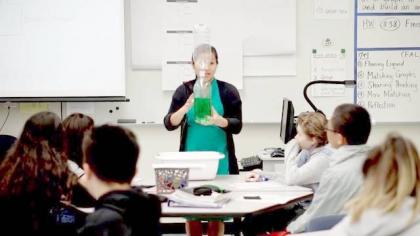Classroom Observations
Teachers who are developing students’ capacity to "model with mathematics" move explicitly between real-world scenarios and mathematical representations of those scenarios. A middle childhood teacher might pose a scenario of candy boxes containing multiple flavors to help students identify proportions and ratios of flavors and ingredients. An early adolescence teacher might represent a comparison of different DVD rental plans using a table, asking the students whether or not the table helps directly compare the plans or whether elements of the comparison are omitted. A teacher of adolescents and young adults might pose a "kite factory" scenario, in which advanced students are asked to determine the conditions for always creating a particular shape of kite given the dimensions of the diagonals and the angle of intersection. Visit the video excerpts below to view multiple examples of teachers engaging students in mathematical modeling.
The Standard
Mathematically proficient students can apply the mathematics they know to solve problems arising in everyday life, society, and the workplace. In early grades, this might be as simple as writing an addition equation to describe a situation. In middle grades, a student might apply proportional reasoning to plan a school event or analyze a problem in the community. By high school, a student might use geometry to solve a design problem or use a function to describe how one quantity of interest depends on another. Mathematically proficient students who can apply what they know are comfortable making assumptions and approximations to simplify a complicated situation, realizing that these may need revision later. They are able to identify important quantities in a practical situation and map their relationships using such tools as diagrams, two-way tables, graphs, flowcharts and formulas. They can analyze those relationships mathematically to draw conclusions. They routinely interpret their mathematical results in the context of the situation and reflect on whether the results make sense, possibly improving the model if it has not served its purpose.
show more








